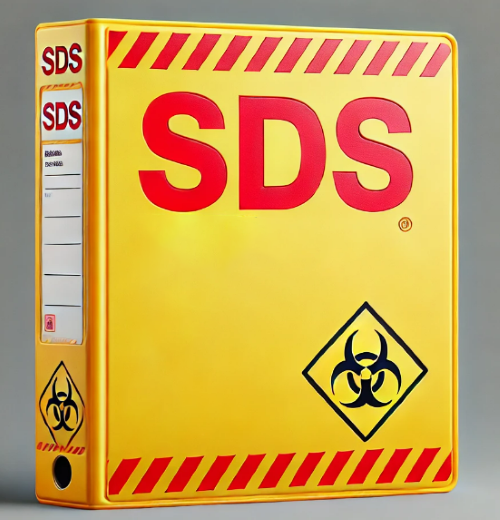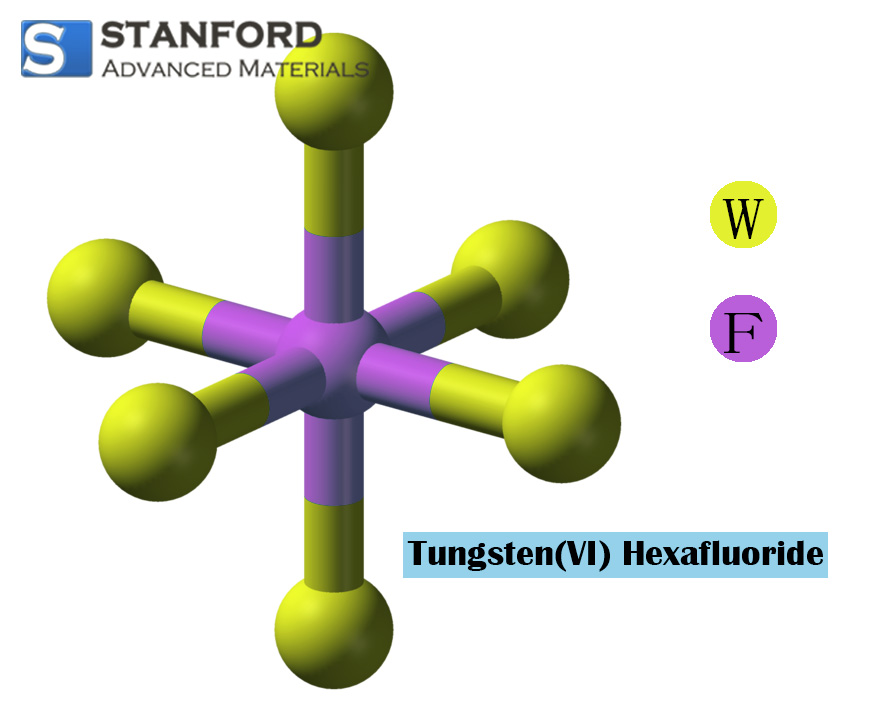Safety Data Sheet of Silver Trifluoroacetate
1 Identification
Trade name: Silver trifluoroacetate
CAS Number: 2966-50-9
EC number: 236-708-3
2 Hazard(s) identification
•Classification of the substance or mixture GHS07
GHS07
Skin Irrit. 2 H315 Causes skin irritation.
Eye Irrit. 2A H319 Causes serious eye irritation.
STOT SE 3 H335 May cause respiratory irritation.
•Label elements
•GHS label elements
The substance is classified and labeled according to the Globally Harmonized System (GHS).
•Hazard pictograms
•Signal word Warning
•Hazard-determining components of labeling:
silver trifluoroacetate
•Hazard statements
H315 Causes skin irritation.
H319 Causes serious eye irritation.
H335 May cause respiratory irritation.
•Precautionary statements
P262 Do not get in eyes, on skin, or on clothing.
P280 Wear protective gloves/protective clothing/eye protection/face protection.
P305+P351+P338 If in eyes: Rinse cautiously with water for several minutes. Remove contact lenses, if present
and easy to do. Continue rinsing.
P304+P340 IF INHALED: Remove person to fresh air and keep comfortable for breathing.
P403+P233 Store in a well-ventilated place. Keep container tightly closed.
P501 Dispose of contents/container in accordance with local/regional/national/international
regulations.
•Classification system:
•NFPA ratings (scale 0 - 4)
Health = 1
Fire = 0
Reactivity = 0
•HMIS ratings (scale 0 - 4)
Health = 1
Fire = 0
Reactivity = 0
•Other hazards
•Results of PBT and vPvB assessment
•PBT: Not applicable.
•vPvB: Not applicable.
3 Composition/information on ingredients
•Chemical characterization: Substances
•CAS No. Description
2966-50-9 silver trifluoroacetate
•Identification number(s)
•EC number: 236-708-3
4 First-aid measures
•Description of first aid measures
•After inhalation: In case of unconsciousness place patient stably in side position for transportation.
•After skin contact: Immediately wash with water and soap and rinse thoroughly.
•After eye contact:
Rinse opened eye for several minutes under running water. If symptoms persist, consult a doctor.
•After swallowing: If symptoms persist consult doctor.
•Information for doctor:
•Most important symptoms and effects, both acute and delayed No further relevant information available.
•Indication of any immediate medical attention and special treatment needed
No further relevant information available.
5 Fire-fighting measures
•Extinguishing media
•Suitable extinguishing agents:
CO2, extinguishing powder or water spray. Fight larger fires with water spray or alcohol resistant foam.
•Special hazards arising from the substance or mixture No further relevant information available.
•Advice for firefighters
•Protective equipment: No special measures required.
6 Accidental release measures
•Personal precautions, protective equipment and emergency procedures Not required.
•Environmental precautions: No special measures required.
•Methods and material for containment and cleaning up:
Dispose contaminated material as waste according to item 13.
Ensure adequate ventilation.
•Reference to other sections
See Section 7 for information on safe handling.
See Section 8 for information on personal protection equipment.
See Section 13 for disposal information.
7 Handling and storage
•Handling:
•Precautions for safe handling No special precautions are necessary if used correctly.
•Information about protection against explosions and fires: No special measures required.
•Conditions for safe storage, including any incompatibilities
•Storage:
•Requirements to be met by storerooms and receptacles: No special requirements.
•Information about storage in one common storage facility: Not required.
•Further information about storage conditions: Keep receptacle tightly sealed.
•Specific end use(s) No further relevant information available.
8 Exposure controls/personal protection
•Additional information about design of technical systems: No further data; see item 7.
•Control parameters
•Components with limit values that require monitoring at the workplace:
2966-50-9 silver trifluoroacetate
PEL Long-term value: 0.01 mg/m³ (as Ag)
REL Long-term value: 0.01 mg/m³ (as Ag)
TLV Long-term value: 0.01 mg/m³ (as Ag)
•Additional information: The lists that were valid during the creation were used as basis.
•Exposure controls
•Personal protective equipment:
•General protective and hygienic measures:
Keep away from foodstuffs, beverages and feed.
Immediately remove all soiled and contaminated clothing.
Wash hands before breaks and at the end of work.
Avoid contact with the eyes and skin.
•Breathing equipment:
In case of brief exposure or low pollution use respiratory filter device. In case of intensive or longer exposure use respiratory protective device that is independent of circulating air.
•Protection of hands: Protective gloves
Protective gloves
The glove material has to be impermeable and resistant to the product/ the substance/ the preparation.
Due to missing tests no recommendation to the glove material can be given for the product/ the preparation/ the chemical mixture.
Selection of the glove material on consideration of the penetration times, rates of diffusion and the degradation
•Material of gloves
The selection of the suitable gloves does not only depend on the material, but also on further marks of quality and varies from manufacturer to manufacturer.
•Penetration time of glove material
The exact break through time has to be found out by the manufacturer of the protective gloves and has to be observed.
•Eye protection: Tightly sealed goggles
Tightly sealed goggles
9 Physical and chemical properties
•Information on basic physical and chemical properties
•General Information
•Appearance:
Form: Powder
Color: Whitish
•Odor: Odorless
•Odor threshold: Not determined.
•pH-value: Not applicable.
•Change in condition
Melting point/Melting range: no data °C
Boiling point/Boiling range: no data °C
•Flash point: Not applicable.
•Flammability (solid, gaseous): Product is not flammable.
•Ignition temperature:
Decomposition temperature: Not determined.
•Auto igniting: Not determined.
•Danger of explosion: Product does not present an explosion hazard.
•Explosion limits:
Lower: Not determined.
Upper: Not determined.
•Vapor pressure: no data hPa
•Density: Not determined.
•Relative density Not determined.
•Vapor density Not applicable.
•Evaporation rate Not applicable.
•Solubility in / Miscibility with
Water: Insoluble.
•Partition coefficient (n-octanol/water): Not determined.
•Viscosity:
Dynamic: Not applicable.
Kinematic: Not applicable.
•Solvent content:
Organic solvents: 0.0 %
VOC content: 0.0 g/l / 0.00 lb/gl
Solids content: 100.0 %
•Other information No further relevant information available.
10 Stability and reactivity
•Reactivity No further relevant information available.
•Chemical stability
•Thermal decomposition / conditions to be avoided: No decomposition if used according to specifications.
•Possibility of hazardous reactions No dangerous reactions known.
•Conditions to avoid No further relevant information available.
•Incompatible materials: No further relevant information available.
•Hazardous decomposition products: No dangerous decomposition products known.
11 Toxicological information
•Information on toxicological effects
•Acute toxicity:
•Primary irritant effect:
•on the skin: Irritant to skin and mucous membranes.
•on the eye: Irritating effect.
•Sensitization: No sensitizing effects known.
•Additional toxicological information:
•Carcinogenic categories
•IARC (International Agency for Research on Cancer)
Substance is not listed.
•NTP (National Toxicology Program)
Substance is not listed.
•OSHA-Ca (Occupational Safety & Health Administration)
Substance is not listed.
12 Ecological information
•Toxicity
•Aquatic toxicity: No further relevant information available.
•Persistence and degradability No further relevant information available.
•Behavior in environmental systems:
•Bioaccumulative potential No further relevant information available.
•Mobility in soil No further relevant information available.
•Additional ecological information:
•General notes: Not known to be hazardous to water.
•Results of PBT and vPvB assessment
•PBT: Not applicable.
•vPvB: Not applicable.
•Other adverse effects No further relevant information available.
13 Disposal considerations
•Waste treatment methods
•Recommendation:
Must not be disposed of together with household garbage. Do not allow product to reach sewage system.
•Uncleaned packagings:
•Recommendation: Disposal must be made according to official regulations.
14 Transport information
•UN-Number
•DOT, ADN, IMDG, IATA not regulated
•UN proper shipping name
•DOT, ADN, IMDG, IATA not regulated
•Transport hazard class(es)
•DOT, ADN, IMDG, IATA
•Class not regulated
•Packing group
•DOT, IMDG, IATA not regulated
•Environmental hazards:
•Marine pollutant: No
•Special precautions for user Not applicable.
•Transport in bulk according to Annex II of
MARPOL73/78 and the IBC Code Not applicable.
•UN "Model Regulation": not regulated
15 Regulatory information
•Safety, health and environmental regulations/legislation specific for the substance or mixture
•Sara
•Section 355 (extremely hazardous substances):
Substance is not listed.
•Section 313 (Specific toxic chemical listings):
Substance is listed.
•TSCA (Toxic Substances Control Act):
Substance is listed.
•Proposition 65
•Chemicals known to cause cancer:
Substance is not listed.
•Chemicals known to cause reproductive toxicity for females:
Substance is not listed.
•Chemicals known to cause reproductive toxicity for males:
Substance is not listed.
•Chemicals known to cause developmental toxicity:
Substance is not listed.
•Carcinogenic categories
•EPA (Environmental Protection Agency)
Substance is not listed.
•TLV (Threshold Limit Value established by ACGIH)
Substance is not listed.
•NIOSH-Ca (National Institute for Occupational Safety and Health)
Substance is not listed.
•GHS label elements
The substance is classified and labeled according to the Globally Harmonized System (GHS).
•Hazard pictograms
•Signal word Warning
•Hazard-determining components of labeling:
silver trifluoroacetate
•Hazard statements
H315 Causes skin irritation.
H319 Causes serious eye irritation.
H335 May cause respiratory irritation.
•Precautionary statements
P262 Do not get in eyes, on skin, or on clothing.
P280 Wear protective gloves/protective clothing/eye protection/face protection.
P305+P351+P338 If in eyes: Rinse cautiously with water for several minutes. Remove contact lenses, if present and easy to do. Continue rinsing.
P304+P340 IF INHALED: Remove person to fresh air and keep comfortable for breathing.
P403+P233 Store in a well-ventilated place. Keep container tightly closed.
P501 Dispose of contents/container in accordance with local/regional/national/international regulations.
•Chemical safety assessment: A Chemical Safety Assessment has not been carried out.
16 Other information
This information is based on our present knowledge. However, this shall not constitute a guarantee for any specific product features and shall not establish a legally valid contractual relationship.
•Abbreviations and acronyms:
ADR: Accord européen sur le transport des marchandises dangereuses par Route (European Agreement concerning the International Carriage of Dangerous Goods by Road)
IMDG: International Maritime Code for Dangerous Goods
DOT: US Department of Transportation
IATA: International Air Transport Association
ACGIH: American Conference of Governmental Industrial Hygienists
EINECS: European Inventory of Existing Commercial Chemical Substances
CAS: Chemical Abstracts Service (division of the American Chemical Society)
NFPA: National Fire Protection Association (USA)
HMIS: Hazardous Materials Identification System (USA)
VOC: Volatile Organic Compounds (USA, EU)
PBT: Persistent, Bioaccumulative and Toxic
vPvB: very Persistent and very Bioaccumulative
NIOSH: National Institute for Occupational Safety
OSHA: Occupational Safety & Health
TLV: Threshold Limit Value
PEL: Permissible Exposure Limit
REL: Recommended Exposure Limit
Skin Irrit. 2: Skin corrosion/irritation, Hazard Category 2
Eye Irrit. 2A: Serious eye damage/eye irritation, Hazard Category 2A
STOT SE 3: Specific target organ toxicity - Single exposure, Hazard Category 3



